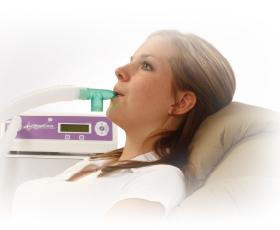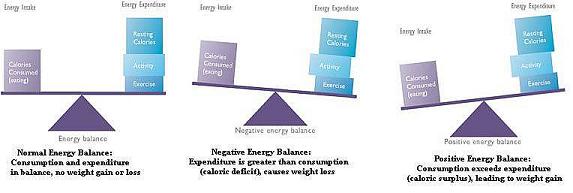Metabolic Rate Measurements

Metabolic rate, or metabolism, is the rate at which the body expends energy. This is also referred to as the “caloric burn rate”. Knowing metabolic rate is vital for weight loss as well as for determining the proper feeding amounts needed to treat various disease states.
Energy expenditure can be divided into three groups of calories.
Resting Calories – Calories that are burned while the body is at rest. These calories are needed just to maintain life. The majority of all calories burned (about 70-80%) are burned at the resting level.
Activity Calories – Calories that are burned because of normal daily activities are “Activity Calories”. Normal daily activities such as walking, eating (digesting food), typing, etc. are included in activity calories.
Exercise Calories – These calories are burned because of exercise.
The sum of all of these groups of calories is the total metabolic rate.
Energy Balance
The body gains or loses fat based on energy balance. Energy balance refers to the relationship between energy intake (eating) and energy expenditure (metabolic rate). The figures below describe the three states of energy balance.
Normal Energy Balance: Consumption and expenditure in balance, no weight gain or loss.
Negative Energy Balance: Expenditure is greater than consumption (caloric deficit), causes weight loss.
Positive Energy Balance: Consumption exceeds expenditure (caloric surplus), leading to weight gain.

